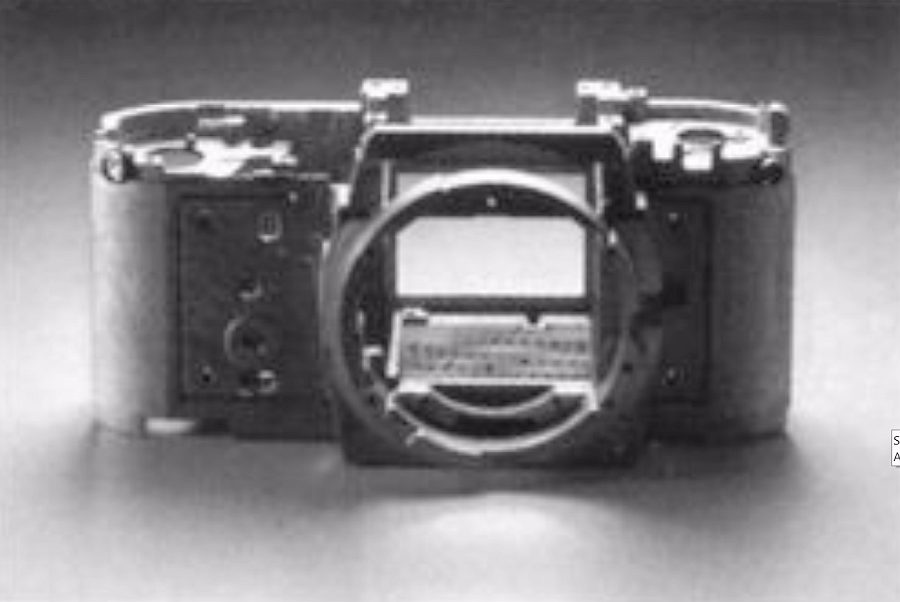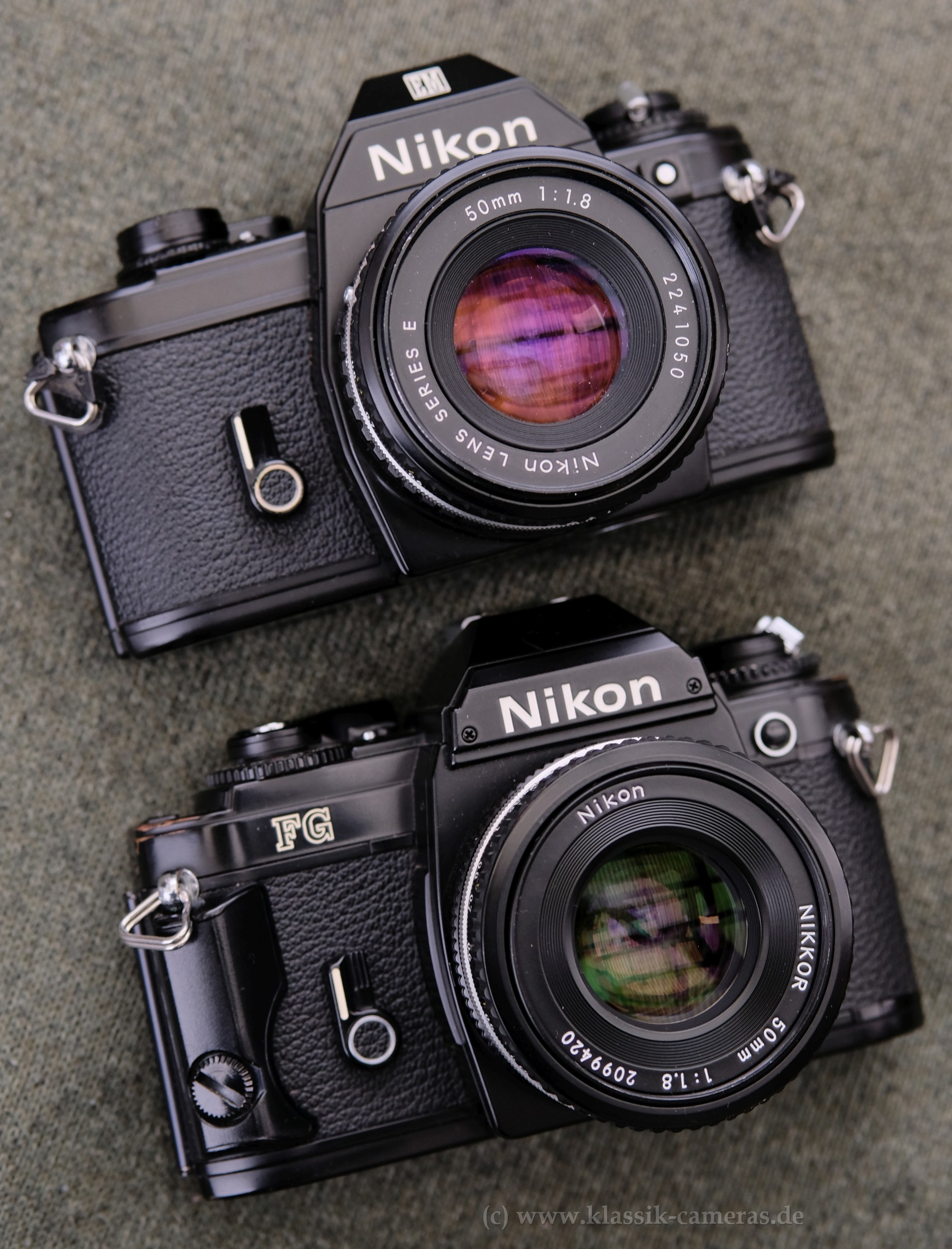
Autofocus wasn't even experimental in 1979 , instead SLRs were manually focused. In the viewfinder of the Nikon EM there is a prism ring and split image indicator, as was customary at the time, plus a time scale with a pointer instrument for checking the shutter speed selected by the automatic exposure system (CdS cell), overexposure and underexposure display. A very decent viewfinder image for the price range. However, the Pentax ME had long had LEDs here, and they were even available in multiple colors. The measuring range of the exposure meter went from 2-18 EV, this was also standard.












